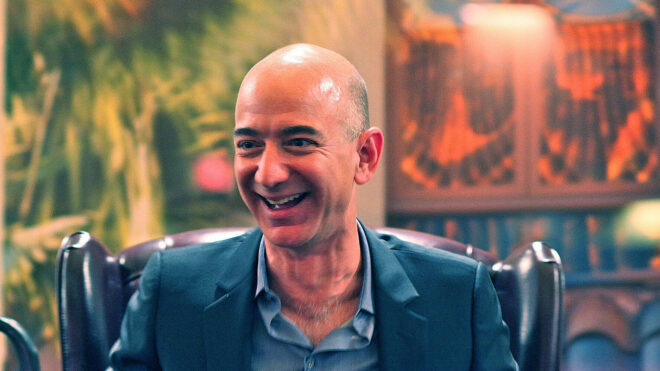Motivation in the workplace is a complex interplay of psychological factors that extend far beyond simple reward systems. Understanding these deeper drivers can transform organizational performance and employee satisfaction.
For decades, businesses have relied on a carrot-and-stick approach to motivation: financial incentives for good performance and negative consequences for poor results. Yet research consistently shows that human motivation in the workplace is far more nuanced and complex than these traditional models suggest.
The Evolution of Motivation Theory
Our understanding of workplace motivation has evolved dramatically over the past century:
1. Scientific Management (Early 1900s)
Frederick Taylor's approach assumed workers were primarily motivated by money and needed close supervision. This mechanistic view treated employees as extensions of machinery, focusing exclusively on efficiency and financial incentives.
2. Human Relations Movement (1930s-1950s)
Following the Hawthorne studies, which revealed the importance of social factors in productivity, theorists began recognizing that employees were motivated by more than just money—social connections and feeling valued also mattered.
3. Content Theories (1950s-1970s)
Maslow's Hierarchy of Needs, Herzberg's Two-Factor Theory, and McClelland's Need Theory all proposed that different types of needs drive human behavior, from basic physiological requirements to higher-order needs for achievement and self-actualization.
4. Process Theories (1960s-1980s)
Theories like Expectancy Theory, Equity Theory, and Goal-Setting Theory focused on the cognitive processes behind motivation—how employees make decisions about effort based on expected outcomes, fairness perceptions, and goal characteristics.
5. Contemporary Approaches (1990s-Present)
Modern motivation research integrates neuroscience, behavioral economics, and positive psychology, revealing the importance of autonomy, purpose, mastery, and intrinsic motivation.
The Intrinsic vs. Extrinsic Motivation Paradigm
Perhaps the most important distinction in modern motivation theory is between intrinsic motivation (doing something because it's inherently interesting or enjoyable) and extrinsic motivation (doing something for external rewards or to avoid punishment).
Research by Edward Deci and Richard Ryan has shown that while extrinsic motivators can be effective for simple, algorithmic tasks, they often undermine motivation for creative, complex work. In fact, their studies demonstrate that contingent rewards can actually reduce intrinsic motivation—a phenomenon called the "overjustification effect."
The Self-Determination Theory Framework
Self-Determination Theory identifies three innate psychological needs that, when satisfied, allow for optimal functioning and growth:
- Autonomy: The need to feel in control of one's own behaviors and goals
- Competence: The need to master tasks and learn different skills
- Relatedness: The need to feel connected to others
When these needs are met in the workplace, employees experience greater intrinsic motivation, well-being, and performance.
The Neuroscience of Motivation
Advances in neuroscience have provided fascinating insights into the biological basis of motivation:
1. The Dopamine Effect
Dopamine, often called the "reward chemical," plays a crucial role in motivation. However, contrary to popular belief, dopamine is released not just when we receive rewards, but when we anticipate them. This explains why progress toward goals can be as motivating as achieving them.
2. The Threat Response
The brain's threat response (triggered by perceived dangers to status, certainty, autonomy, relatedness, or fairness) can severely impair motivation and cognitive function. Leadership behaviors that trigger threat responses—like micromanagement or public criticism—can dramatically reduce employee motivation and performance.
3. The Connection Between Stress and Motivation
While some stress can enhance motivation (eustress), chronic stress depletes cognitive resources and impairs the prefrontal cortex—the brain region responsible for planning, decision-making, and self-regulation. This explains why burnout so dramatically reduces motivation.
Psychological Factors That Drive Workplace Motivation
1. Purpose and Meaning
Research by Adam Grant at Wharton shows that employees who see a clear connection between their work and a positive impact on others show dramatically higher motivation and productivity. In one study with university fundraisers, simply showing them letters from scholarship recipients increased weekly phone minutes by 142% and revenue by 171%.
Implementation Strategy: Regularly connect employees with the end users of their work. Share customer success stories and testimonials. Help employees articulate their personal "why" that connects to organizational purpose.
2. Progress and Mastery
Teresa Amabile's research on the "progress principle" found that the single most important factor in boosting emotions, motivation, and perceptions during the workday is making progress in meaningful work—even small wins can have a major impact.
Implementation Strategy: Break large projects into smaller milestones. Celebrate incremental achievements. Provide immediate, specific feedback on progress. Create visual systems to track advancement toward goals.
3. Autonomy and Agency
Studies show that perceived control over one's work is one of the strongest predictors of job satisfaction, motivation, and performance. A Cornell University study found that businesses that gave employees more autonomy grew four times faster than control-oriented companies.
Implementation Strategy: Focus on outcomes rather than processes. Allow flexible work arrangements where possible. Involve employees in decision-making. Create "choice architecture" that allows for personalized approaches to achieving goals.
4. Social Connection and Belonging
Humans are fundamentally social beings, and the need to belong is a powerful motivator. Research shows that social exclusion activates the same brain regions as physical pain, while positive social connections release oxytocin, which promotes trust and collaboration.
Implementation Strategy: Foster psychological safety in teams. Create opportunities for meaningful collaboration. Recognize contributions publicly. Develop rituals that build team identity and cohesion.
5. Growth Mindset and Learning Orientation
Carol Dweck's research on mindset shows that individuals who believe their abilities can be developed through dedication and hard work (growth mindset) demonstrate higher motivation and achievement than those who believe their talents are fixed traits (fixed mindset).
Implementation Strategy: Reward effort and learning, not just outcomes. Share stories of growth and development. Normalize failure as part of the learning process. Provide opportunities for stretch assignments with appropriate support.
Case Study: Motivation Transformation at Microsoft
When Satya Nadella became CEO of Microsoft in 2014, he faced a demotivated workforce suffering from internal competition and fear of failure. Nadella implemented a psychological approach to motivation:
- He shifted the company from a "know-it-all" to a "learn-it-all" culture, embracing a growth mindset
- He connected work to purpose by refocusing on customer needs and societal impact
- He increased autonomy by flattening hierarchies and empowering teams
- He fostered psychological safety by encouraging experimentation and learning from failure
The results were remarkable: employee satisfaction soared, innovation accelerated, and Microsoft's market value increased more than sevenfold.
Practical Applications for Leaders
1. Motivation Diagnostic Tools
Before implementing motivation strategies, assess what currently drives your team members:
- Motivation assessment surveys that measure intrinsic and extrinsic motivational factors
- Stay interviews that explore what keeps employees engaged and what might cause them to leave
- Values identification exercises that help employees articulate what matters most to them
2. Personalized Motivation Strategies
Different individuals are motivated by different factors. Create personalized motivation plans based on individual preferences and drivers:
- For employees driven by achievement, provide challenging goals and recognition for accomplishments
- For those motivated by affiliation, create opportunities for meaningful collaboration and team celebration
- For those seeking growth, develop clear learning paths and development opportunities
- For purpose-driven individuals, strengthen the connection between their work and meaningful impact
3. Environmental Design for Motivation
Physical and cultural environments significantly impact motivation:
- Design workspaces that support both focused work and collaboration
- Create visual reminders of purpose, progress, and impact
- Establish rituals that reinforce core values and celebrate achievements
- Remove demotivating factors like unnecessary bureaucracy and toxic behaviors
Measuring Motivation: Beyond Engagement Surveys
Traditional engagement surveys often fail to capture the nuanced nature of motivation. Consider these alternative measurement approaches:
- Behavioral metrics: Discretionary effort, innovation contributions, knowledge sharing
- Psychological indicators: Flow experiences, work absorption, psychological safety
- Physiological markers: Stress levels, sleep quality, recovery time
- Social network analysis: Patterns of collaboration, information flow, and influence
Conclusion: The Future of Workplace Motivation
As work becomes increasingly complex, creative, and collaborative, understanding the psychological foundations of motivation becomes not just advantageous but essential. Organizations that create environments aligned with human psychological needs will not only see higher performance but also contribute to employee wellbeing and fulfillment.
The future of workplace motivation lies not in more sophisticated incentive systems but in more human-centered approaches that recognize the intrinsic desires for purpose, mastery, autonomy, and connection that drive us all.




